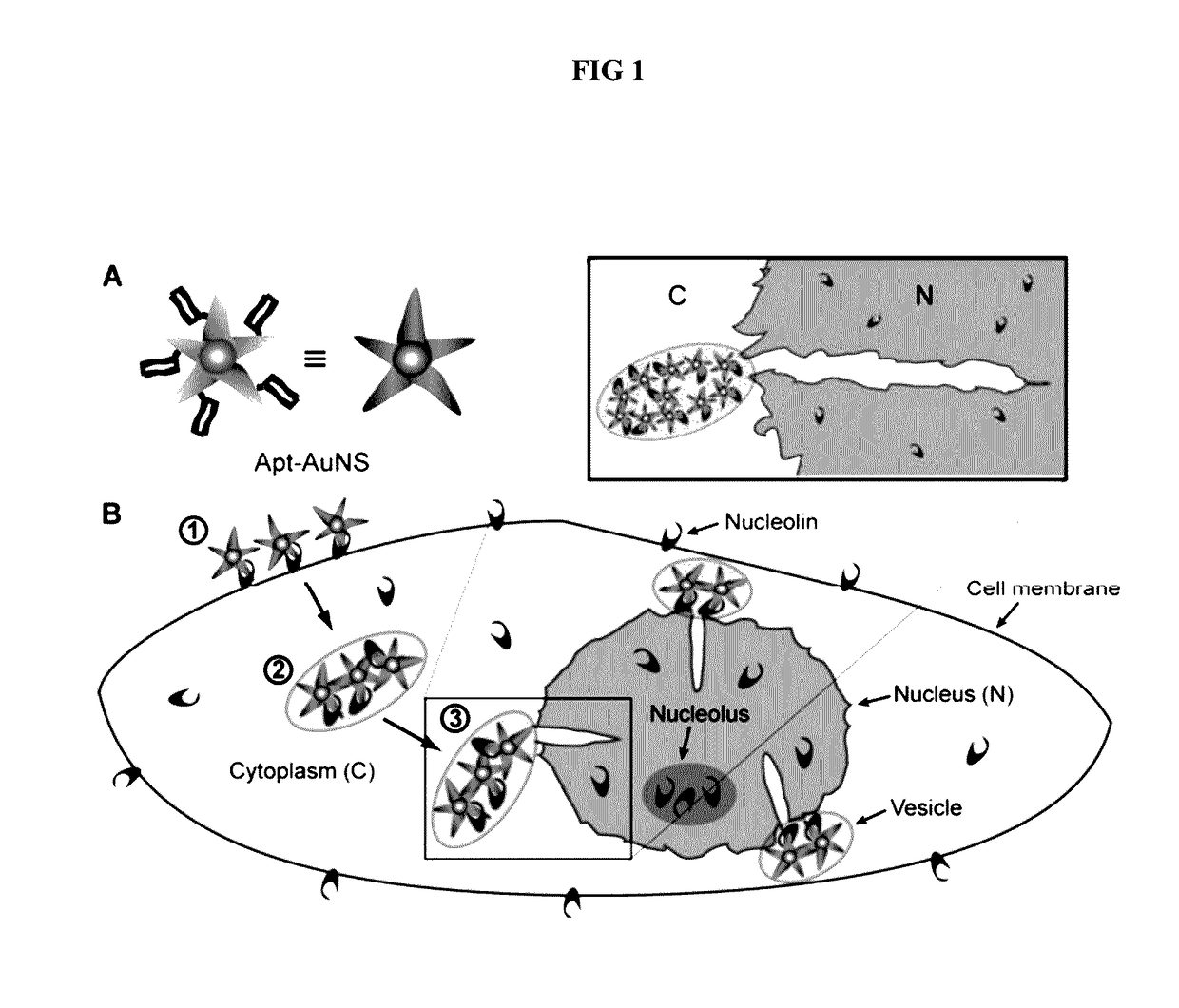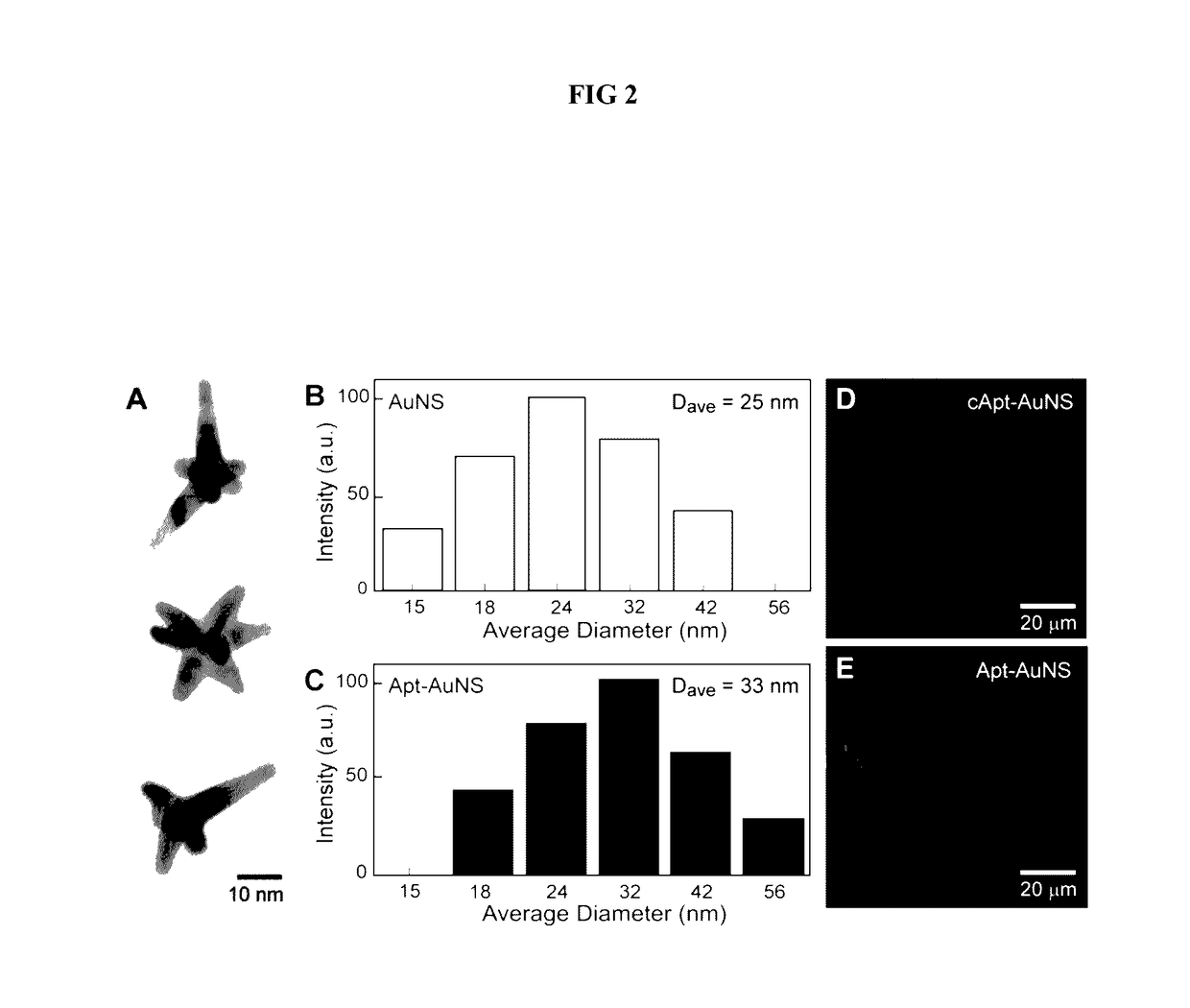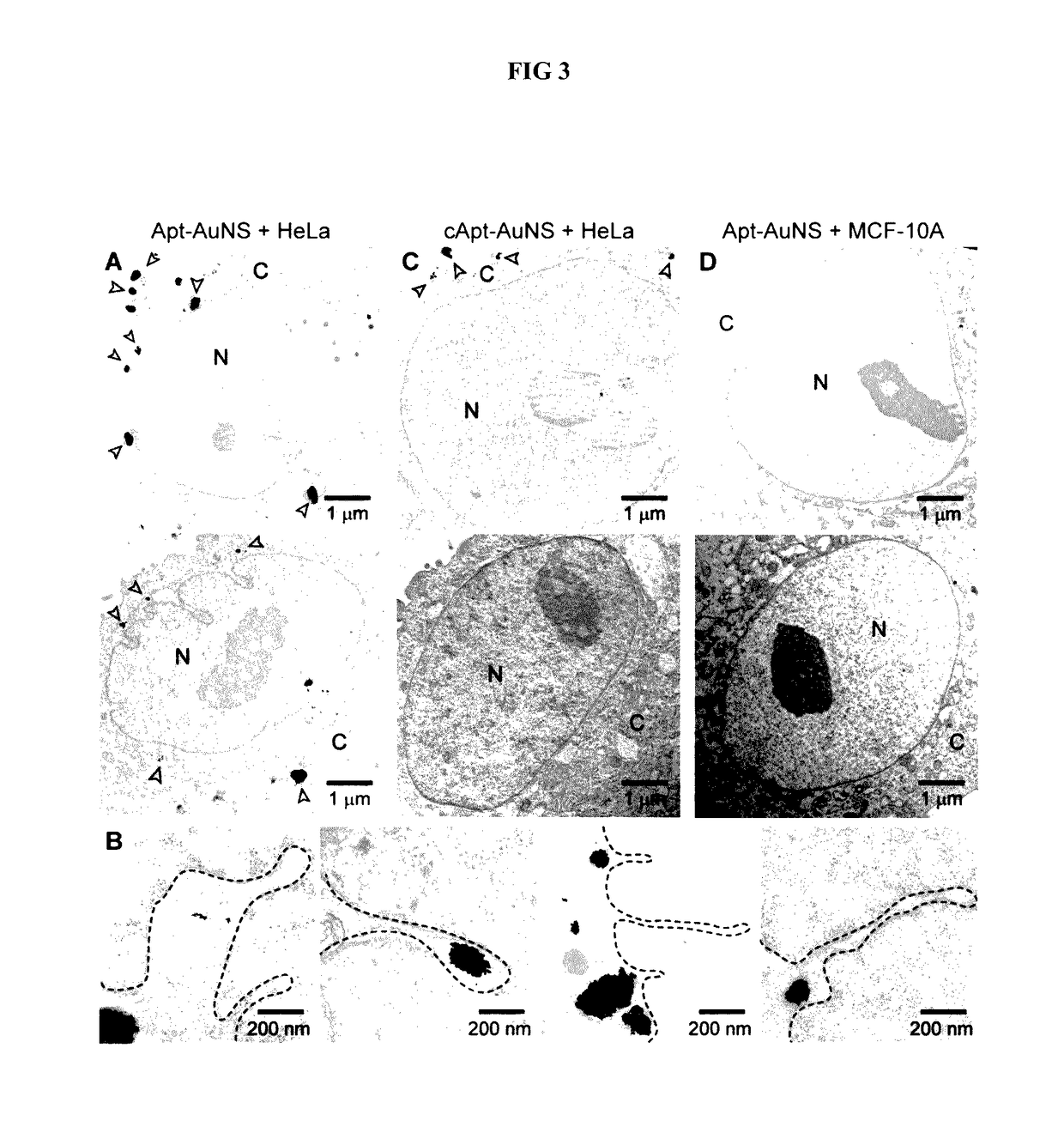Aptamer-loaded, biocompatible nanoconstructs for nuclear-targeted cancer therapy
a biocompatible, cancer therapy technology, applied in the direction of organic chemistry, drug photocleavage, enzymes, etc., can solve the problems of not all cancer cells in the same tumor express the target receptor, treatment becomes cell-type dependent, and cannot eradicate the entire tumor cell population, so as to improve the therapeutic effect and reduce cell viability
- Summary
- Abstract
- Description
- Claims
- Application Information
AI Technical Summary
Benefits of technology
Problems solved by technology
Method used
Image
Examples
example 1
Cell Culturing
[0051]The human cervical carcinoma HeLa cell line (ATCC) is maintained in Dulbecco's Modified Eagle Medium (DMEM) (Gibco) supplement with 10% fetal bovine serum (FBS)(Invitrogen). The human epithelial cell line MCF-10A (TBC) is maintained in DMEM / F12 medium (Gibco) supplement with 10% horse serum (Invitrogen), 20 ng / m Lepidermal growth factor (EGF) (Sigma Aldrich), 0.5 mg / mL hydrocortisone (Sigma Aldrich), 100 μg / mL cholera toxins (Sigma Aldrich), and 10 μg / mL insulin (Sigma Aldrich). The cells are cultured at 37° C. with 5% CO2 and plated in T25 flasks (VWR) with aforementioned media.
example 2
Synthesis of Biocompatible Gold Nanoparticles with Optical Properties in the NIR
[0052]By adapting a protocol from Xie et at (Xie, J. P. et al., 2007 Chem Mater 19, 2823, incorporated herein by reference), gold nanostars (AuNSs) are synthesized by reducing Au(III) chlorate in HEPES buffer to create biocompatible, surfactant-free gold nanoparticles (AuNPs) for in vitro studies. The AuNSs are prepared by mixing 5 μL of 40 mM HAuCl4 (Sigma Aldrich) with 1 mL of 140 mM HEPES buffer. The resonance wavelength of the AuNS is measured using UV-vis spectroscopy. The size of the particles is determined using both high resolution transmission electron microscopy (HR-TEM) and dynamic light scattering (DLS).
[0053]To quantify the AuNS concentration, the Au content is measured in a specified volume of AuNS with inductively coupled plasma-mass spectrometry (ICP-MS). Next, by assuming similar numbers of Au atoms in a AuNS and a spherical 30-nm Au particle, the number of AuNS in a specific solution ba...
example 3
Loading Aptamer Drugs on the Gold Nanostars
[0054]Formation of Apt-AuNS Nanoconstructs
[0055]AS-1411 aptamer with a disulfide modification at the 5′-end and a control aptamer (cApt), where all the guanines are replaced with cytosines, are purchased from TriLink Biotechnologies, Inc. HPLC purified aptamers are dissolved in Millipore water (18.2 MΩ-cm) to make 1 mM solutions. The disulfide bond is cleaved by adding 2.5 μL of 25 mM tris(2-carboxyethyl)phosphine (TCEP) (Sigma Aldrich) to 10 μL of the 1 mM aptamer solution. After 30 minutes, the thiolated aptamer solution is added to 10 mL of 0.2 nM solution of AuNS and left overnight to form the nanoconstruct (Apt-AuNS). To increase the surface concentration of aptamers on AuNS (Hill, H. D. et al., 2009 Acs Nano 3, 418, incorporated herein by reference), the mixture solution is salted with 2.5 mL of a 500-mM solution of NaCl twice, separated by 4 hours. The size of the nanoconstructs is characterized using DLS.
[0056]Calculation of the Num...
PUM
| Property | Measurement | Unit |
|---|---|---|
| time | aaaaa | aaaaa |
| diameter | aaaaa | aaaaa |
| hydrodynamic diameter | aaaaa | aaaaa |
Abstract
Description
Claims
Application Information
 Login to View More
Login to View More - R&D
- Intellectual Property
- Life Sciences
- Materials
- Tech Scout
- Unparalleled Data Quality
- Higher Quality Content
- 60% Fewer Hallucinations
Browse by: Latest US Patents, China's latest patents, Technical Efficacy Thesaurus, Application Domain, Technology Topic, Popular Technical Reports.
© 2025 PatSnap. All rights reserved.Legal|Privacy policy|Modern Slavery Act Transparency Statement|Sitemap|About US| Contact US: help@patsnap.com



